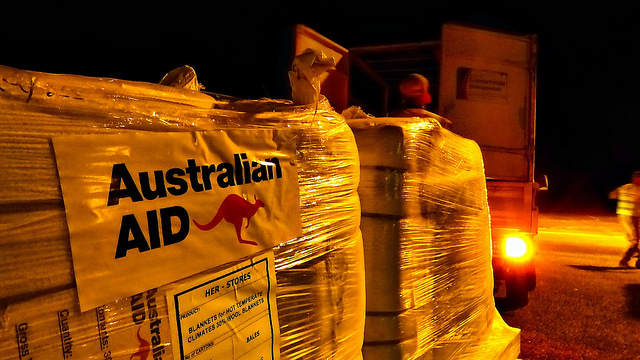Ahead of a high-level countering violent extremism (CVE) meeting planned for the margins of the United Nations General Assembly next month, our Strategic Insights paper released today, Security through aid, argues that CVE and terrorism are international security and development issues: they’re both increasingly relevant to poverty reduction.
Poverty doesn’t make people into terrorists, but poor people in poor countries are the group most affected by terrorism: only a small percentage (around 5%) of the more than 100,000 deaths (PDF) from terrorist attacks over the past 15 years have occurred in OECD countries.
Violent extremism and terrorism can impact the overall growth rate of a nation through impacts on tourism, financial markets and the attractiveness of a nation for foreign direct investment.
Anti-development terrorist groups, like Islamic State, attack schools and violently restrict the rights of women.
In responding to terrorism, states often have to divert resources away from basic services to improve security. Fragile and conflict-affected states provide an enabling environment for terrorism.
Australia’s foreign aid should be used to strengthen resilience to violent extremist ideologies. Improving governance in weak states can deny terrorists the easy recruiting grounds of lawless communities. This includes security and justice institutions, but is also broader than that.
We should be setting realistic specific CVE goals in our aid program and pursuing those goals in the Indo–Pacific, where we can make a difference and where we’d be most appreciated.
There’s several ways to better leverage our foreign aid program to counter terrorism and violent extremism.
Where a clear need has been identified, implement direct CVE aid programs
If the threat of terrorism or violent extremism is identified, and shown to adversely impact on development, then a dedicated Australian aid program to target violent extremism or efforts to reduce violent extremism through existing initiatives may be justified.
These interventions will target communities at risk of violence with the goal of strengthening resilience against violent extremism.
Australia might consider piloting some small-scale CVE programs in at-risk nations in the Indo–Pacific, such as Bangladesh, or possibly Kenya.
Apply a CVE and counterterrorism ‘filter’ to our aid programs
Even if terrorism and violent extremism aren’t identified as having a significant impact on the target country or community, we should still ensure that any existing Australian aid projects don’t have negative and unintended consequences that might assist terrorist groups. Our aid program should adopt a ‘do no harm’ approach when it comes to CVE and terrorism.
In some settings, development and CVE should be mutually supporting; our aid programs in areas such as civil society development, security and justice, and strengthening the rule of law should ensure they have a positive effect on CVE.
Develop targeted reporting on CVE aid programs
DFAT’s Office of Development Effectiveness should examine the extent to which the impact of aid funding on CVE has been considered. Given that many dedicated CVE aid projects will be small-scale, typical methods of measuring effectiveness may need adjustments from that of larger and more traditional aid programs.
Use InnovationXchange to explore avenues for implementing CVE into the aid strategy
In March, Foreign Minister Bishop launched DFAT’s InnovationXchange to act as a catalyst for new approaches to development assistance.
We should use InnovationXchange to explore avenues for implementing CVE into our aid strategy.
Share information on CVE and aid
As the evidence of the contribution development assistance can make to CVE is limited, we should share information with like-minded nations and others that provide aid for the purpose of CVE.
Lead the debate to modernise official development assistance (ODA) reporting
Australia should lead the debate to modernise ODA reporting when it comes to CVE.
An OECD Development Assistance Committee task team is currently exploring how to modernise ODA directives, including the aid eligibility of security assistance.
Rather than our aid program adapting to new parameters, we should argue for a change to make it explicit that CVE programs can be reported as ODA.
Unfortunately, violent extremism is now becoming an increasing part of the context where development practitioners operate; in the longer term, our aid can promote the right kind of environment to make it more difficult for terrorists and those espousing extremist violence to find footholds.
But we’ll need to recognise that while there are benefits in our security and development sectors working more closely together, there’ll be some tough trade-offs between traditional development and CVE programs to ensure that the aid tool can be used to create the maximum effect in the long-run.


